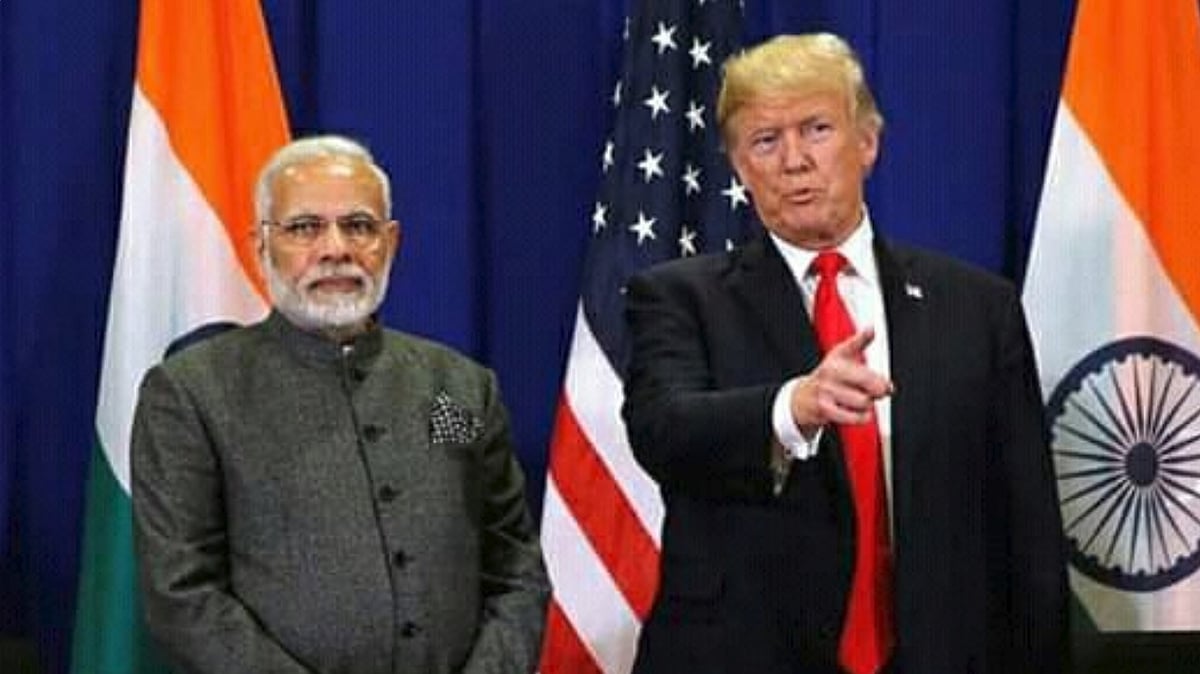Nation
Hopeful of reaching framework trade deal with US this year: Comm Secy
After seven years of rewrites, the Indo–US trade script remains unchanged: everything unresolved, yet perpetually “close”

India is once again “hopeful” — a word now doing more diplomatic heavy lifting than any official in South Block — of reaching a framework trade deal with the United States by the end of this year, Union commerce secretary Rajesh Agrawal announced on Friday.
In the increasingly surreal universe of Indo–US trade negotiations, this amounts to saying the cast has reassembled, the orchestra is tuning, and the audience is politely pretending not to notice that the script has been rewritten a dozen times and the curtains malfunction every other act.
For seven years now — yes, seven — India and the US have been performing this slow-moving tragicomedy. It began around 2018, when Washington abruptly yanked India out of the GSP programme; progressed through 2019–20 mini-deals that were always “days away”; morphed under the Biden administration into a “reset”; and has since evolved into an heroic multi-season series with no finale in sight.
What was once sold as a “simple limited trade package” has matured into parallel negotiations, multiple working streams, and at least three separate timelines, none of which are on speaking terms with reality.
Agrawal, gamely keeping up the illusion of forward motion, said India remains in “protracted negotiations” on a framework deal to resolve America’s tariff barrage. “These are two separate parallel negotiations going on, but one will feed into the other,” he said, as though explaining the mating habits of two bureaucratic tortoises.
Meanwhile, Washington has quietly pocketed several concessions already — which no one on either side is eager to describe out loud. India has rolled back import duties on certain ICT (information and communication technology) products, restored access for some American agricultural goods, and even shelved or withdrawn a few WTO disputes.
Published: undefined
The US, in turn, has perfected the magician’s flourish: inviting the audience to admire the empty hat while the rabbit is quietly hustled offstage. But the real sticking points — the ones never uttered on stage — remain firmly wedged in place.
Soybean
The US wants sweeping market access for its soybean exports and GM crops
India has made no concessions here — none at all
Cutting tariffs or easing GM restrictions would spark farmer uprisings from Madhya Pradesh to Maharashtra
So negotiators politely pretend these demands are “under discussion”, the diplomatic equivalent of hiding a dragon under a doormat
Cotton
The US wants deeper access for its long-staple cotton
India has offered zero concessions, classifying cotton as “extremely sensitive” — the official phrase meaning “absolutely not”
No government in Delhi is about to antagonise Gujarat or Telangana cotton farmers for the sake of a happier textile lobby
Russian crude
India continues to buy Russian crude — though volumes have fallen
No formal halt has been announced, despite persistent US irritation
This remains the most radioactive issue in the trade talks, politely disguised as “global supply chain complexities”
So when Agrawal says the framework agreement is “close,” it is in the same sense that the horizon is close: always visible, never reachable.
“All I can say is that we are close… Now it is only a matter of time… the two countries have to find the right landing zone to announce the deal,” he said, invoking the mythical landing zone that has been “just around the corner” since 2019.
Published: undefined
Speaking at FICCI’s 98th annual general meeting, he added that the remaining obstacles were minimal and mostly political. This is technically true: there is very little left to negotiate because the big obstacles — soybeans, cotton, digital trade, pharma IP, Russia — are not being negotiated at all, merely orbiting the talks like enormous unacknowledged planets.
Asked whether the framework deal might realistically materialise in 2025, he repeated the government’s favourite chorus line: it is hopeful. “Our expectations... we are very optimistic…” he said, before noting that even one unresolved issue in one negotiator’s mind can derail the entire effort — a refreshingly honest nod to the process.
The tariff issue remains the central absurdity: two 25 per cent levies — one for not having a trade deal, and one for buying Russian oil — forming a symmetrical obstacle that would be elegant if it weren’t so economically inconvenient. “The trade deal will be beneficial only when both 25 per cent tariffs are addressed,” Agrawal said, as though describing twin millstones chained to India’s export ambitions.
He also reiterated India’s emphasis on FDI in trade deals, noting that trade and investment “are two sides of the same coin”, citing the India-EFTA agreement’s notional USD 100 billion investment pledge — a round number that floats serenely above the messy reality of Indo-US talks.
In short, the Indo–US trade deal remains a long-running production: part negotiation, part performance art, part philosophical exercise in suspended disbelief. And as always, the audience is invited — with considerable optimism — to believe that the curtain might finally rise on the final act sometime soon.
With PTI inputs
Published: undefined
Follow us on: Facebook, Twitter, Google News, Instagram
Join our official telegram channel (@nationalherald) and stay updated with the latest headlines
Published: undefined